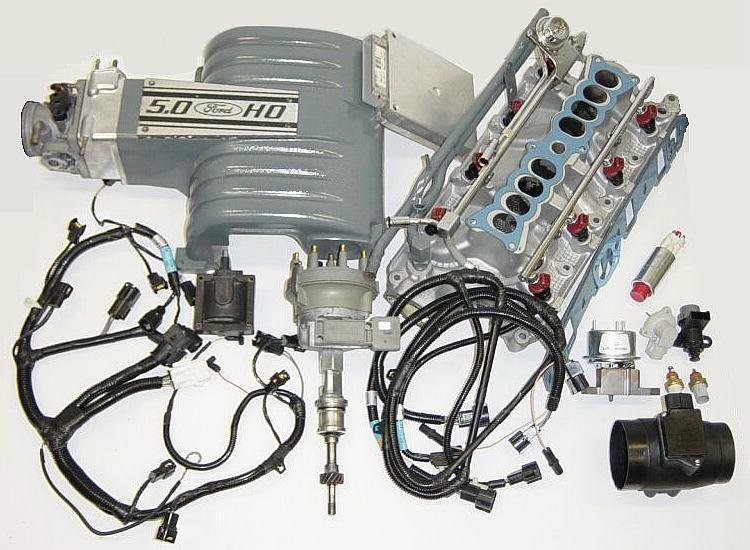Introduction:
Fuel Injection on any vehicle used offroad is a major plus. The fuel injection will automatically adjust it’s air/fuel mixture and doesn’t care if your on an incline when feeding the engine like a carburetor does. Additionally, EFI can increase your fuel economy by 4-5 mpg.
Fuel injection requires a great deal of electricity, so a late model 130-amp alternator is required.
When putting EFI on an early Windsor engine requires a wiring adjustment. Windsor-Fox can modify your wiring and offer loads of help fuel injecting your early V8. You can even send Windsor-Fox your wiring harness and they will label it for you to ease your installation.
To use the EFI distributor you will need an early style cast iron gear. The old style gear will not fit on the newer distributor. You need a distributor gear from a F-150 that had EFI and a non-roller cam.
Parts You’ll Need:
Complete EFI Off Donor Engine
Engine Control Module (Computer)
High-Output 130-Amp Alternator
Low-Profile Cast Aluminum Valve Covers Found On 5.0 Mustangs
Windsor-Fox’s Universal 5.0 Throttle Pedal Adapter
External Mounted EFI Fuel Pump & Filter
EFI Oxygen Sensor
Special Tools:
Ford-Style Fitting Removal Tool (Click HERE)
Steps:
1) Disconnect the battery and drain the coolant.
2) Remove the distributor, vacuum & fuel lines, intake manifold and carburetor.
3) Install a new breather/filter (PN FA-1068) in the back of the EFI’s lower intake manifold.
4) Install the new EFI lower intake.
5) Install fuel rails, injectors and harness on the EFI lower intake.
6) Check the valve covers to see if you need to remove the baffle below the oil filler tube for a proper fit and install the valve covers.
7) Lube the O-ring at the base of each injector with oil before seating the injector into its bore.
8) With the gasket in place, install the upper intake plenum.
9) Install the EGR spacer. Since early V8’s have non-EGR cylinder heads, you need to route exhaust gas from the header pipe directly to the spacer to provide EGR input. EGR function is important because even though it is a non-smog application, the EGR functions in preventing detonation at cruise throttle position.
10) Install the throttle body.
11) Install a steel fitting in to the exhaust manifold to accept the EGR tube, which comes down from the EGR plate.
12) Weld an oxygen sensor bung in to each of the exhaust manifolds.
13) Install the late model throttle pedal.
14) Attach the transmission kick down cable at the throttle body.
15) Install the fuel pump and filter and create a fuel return line. A good return setup can be devised at the filler neck.
16) Mount the inertia switch and wire it in to the fuel pump circuit.
17) Hook up fuel lines.
18) Mount the computer and hook up the wiring harness.
19) Hook up the battery.
20) Activate the system and check for leaks.
Wiring:
Go HERE for our page on EFI wiring.

